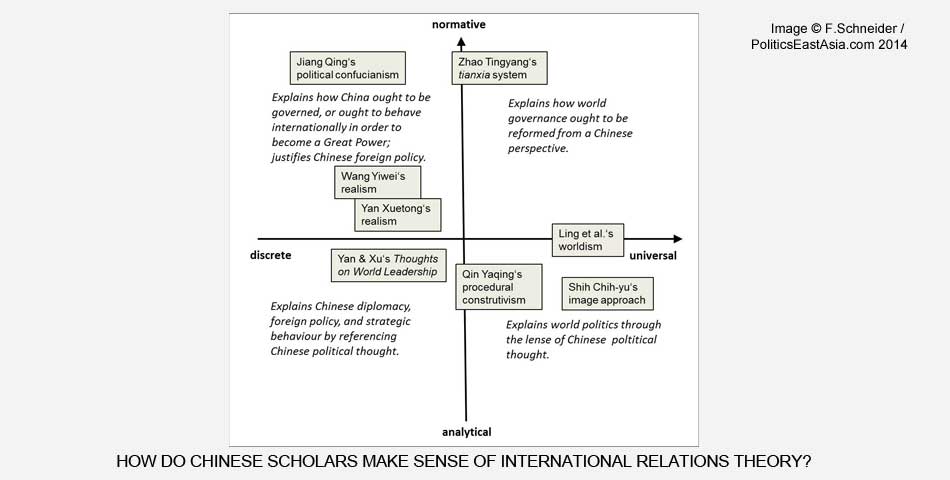
While liberalism believes war to be avoidable through education, reformation of social institutions, and shared interests with other nations, realism finds war to be an unavoidable consequence of the self-preservation of the state. Liberalism sees the potential for and desires change, while realism finds change unlikely. Both theories agree on the principle that the international system is anarchic in nature. However, whereas realism relies on a balance of power to keep the system in check, liberalism does so through cooperation of international institutions and mutual interest of various states. In understanding international relations and world events, understanding the theories and principles through which to view these events is a good start. However, it is also important to ask yourself how you intend to use the theory. These theories can be applied to contemporary situations in order to understand the actions and reactions of various parties relevant to a specific issue. The theories can also be used to look at current events and attempt to predict future events. Another use for the theories is to apply them to past events, in an attempt to explain and understand why the events happened, and why various parties, or states, executed certain decisions.For an example of applying theory to a past event, we can look to the Gulf War of 1991. From the historic record, we
Constructivism believes that individuals with their personal ideas and norms drive international relations. If the people within a state have a deep hatred for an opposing state, then the state itself would not have relations with the enemy state due to the ideals of the people. Theories of international relations: both \'have focused on the differential growth of power among societies as the key to political change\'. The one theory spells this out in terms of productive forces and class interests, the other in terms of. Attack the block 2.
...'>International Relations Theories Comparisons(09.02.2020)
laserqplus.netlify.com › 〓 International Relations Theories Comparisons
While liberalism believes war to be avoidable through education, reformation of social institutions, and shared interests with other nations, realism finds war to be an unavoidable consequence of the self-preservation of the state. Liberalism sees the potential for and desires change, while realism finds change unlikely. Both theories agree on the principle that the international system is anarchic in nature. However, whereas realism relies on a balance of power to keep the system in check, liberalism does so through cooperation of international institutions and mutual interest of various states. In understanding international relations and world events, understanding the theories and principles through which to view these events is a good start. However, it is also important to ask yourself how you intend to use the theory. These theories can be applied to contemporary situations in order to understand the actions and reactions of various parties relevant to a specific issue. The theories can also be used to look at current events and attempt to predict future events. Another use for the theories is to apply them to past events, in an attempt to explain and understand why the events happened, and why various parties, or states, executed certain decisions.For an example of applying theory to a past event, we can look to the Gulf War of 1991. From the historic record, we
Constructivism believes that individuals with their personal ideas and norms drive international relations. If the people within a state have a deep hatred for an opposing state, then the state itself would not have relations with the enemy state due to the ideals of the people. Theories of international relations: both \'have focused on the differential growth of power among societies as the key to political change\'. The one theory spells this out in terms of productive forces and class interests, the other in terms of. Attack the block 2.
...'>International Relations Theories Comparisons(09.02.2020)


